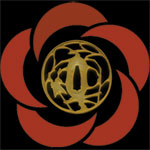 |
Does Aikido really work? Part 1by Peter Goldsbury, Professor of Philosophy at Hiroshima University and Chairman of the International Aikido Federation// Источник: B.A.F. Newsletter, Март 2001, No 38This seems to be a question which has been asked for as long as aikido has existed and the fact that it continues to be asked suggests that there is no satisfactory answer. I think the question really has several aspects and I propose to separate them. One aspect is about the end result of the process: does aikido really do what it is supposed to do? Are the claims made for aikido genuine? Can an accomplished practitioner hold his own against all comers? Another aspect is about the process itself: is aikido practical compared with other martial arts? How long would it take for me to be able to actually use the techniques I have learned? Note that these questions are really asked only outside Japan. Japan is a martial arts culture and here no one would seriously doubt that an accomplished aikidoka could handle a conflict situation very satisfactorily indeed, if, that is, he or she actually had to use the techniques. However, the question beloved of armchair martial artists (what would happen if an 8th dan aikidoka met an 8th dan karatedoka one night in a dark alley...?) is never asked here. Even university students, who have a wide range of martial arts to choose from, never choose a martial arts club on the basis of which art actually works or which art is more practical. In Hiroshima University, there is judo, kendo, aikido (3 different clubs with three different 'styles'), karate, taekwondo, shorinji, sumo, and kick-boxing to choose from. It is clear from watching practice that each club has a severe training schedule, but that even after four years of intensive practice, graduates find it very difficult to do very much at all, even within the protected and artificial environment of the dojo. Does Aikido Work as a Means of Self-Defence?Yes, it does. Absolutely. My own reason for starting aikido was not that it was a martial art affording the acquisition of fearsome fighting skills, but a much more pacific reason. There were no competitions and one's progress did not depend on winning or losing matches. One practised with a partner and the fact that both would take turns as uke and tori was a great leveller. The question whether aikido actually worked as a martial art was not one I took seriously until I was around 3rd or 4th dan and in a position to look at high-ranking instructors with some degree of objectivity. In my 'aikido life', I have had the chance to practise under many teachers who are household names in aikido: Senseis Osawa (Kisaburo), Okumura, Yamaguchi, Arikawa, Tada, Fujita, Yamada, Chiba, Kanai, as well as spending a number of years training under our own Technical Director, Kanetsuka Minoru Sensei. Each of these advanced aikidoka has his own ways of executing the basic techniques, even his own preferred techniques and movements, and this fact makes it very hard to define aikido objectively. Nevertheless, from my encounters with shihans like Yamaguchi, Arikawa, Tada, Chiba and Kanetsuka in actual practice, I am convinced that aikido is effective as an art of self-defence and also has other benefits. A few years ago, I took part in a seminar in Katsura, Japan, organised by the Nippon Budokan. It was an international budo seminar at which nine martial arts were represented and which has since become an annual event. The martial arts were: judo, kendo, aikido, karate, naginata, jukendo, sumo, kyudo, and shorinji kempo. Spectacular demonstrations were given by the experts in each art and on this occasion aikido was represented by Fujita Masatake Sensei and karate by Kanazawa Hirokazu Sensei (who was the pioneer of regular karate practice in the Ryushinkan Dojo). All the participants in the seminar were of at least shodan level and one of the features of the seminar was that each participant had to practise a different martial art. I chose naginata and it was a daunting experience. Naginata, which uses what looks like a very long jo with a blade on the end, is practised in Japan mainly by women (the unofficial reason is that men are too physically strong in their upper bodies to handle this halberd effectively). The experience taught me to beware of so-called 'objective' comparisons between the martial arts and also to beware of obatarian: pushy Japanese old ladies who are famous for always being first in the queue for buses and tramcars, who might just happen to have an 8th dan in naginata and be capable of using an umbrella as a lethal weapon. In fact, this seminar was the perfect place to explore the question of whether each martial art actually 'worked' objectively, but this question was never asked. It was tacitly understood that whichever martial art you chose to practise would be effective in doing what it set out to do. Nevertheless, an accumulation of years of training puts one in a position to look at the techniques in a progressively objective fashion and I offer a few comments as the residue of my aikido practice so far.
См. также: |
||||
| © Рюсинкан.ру |
